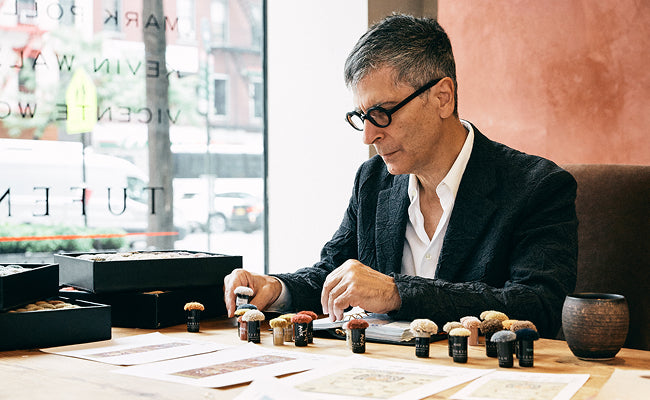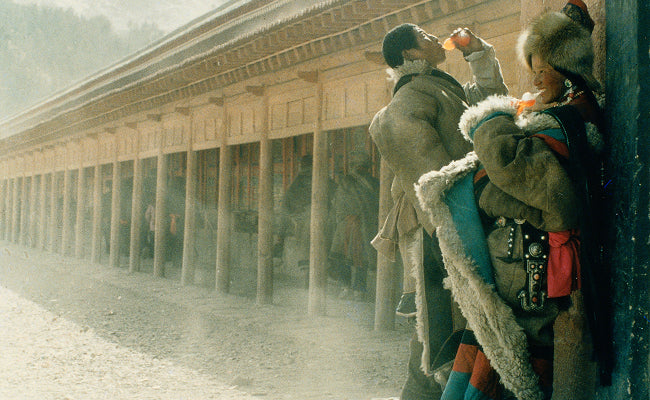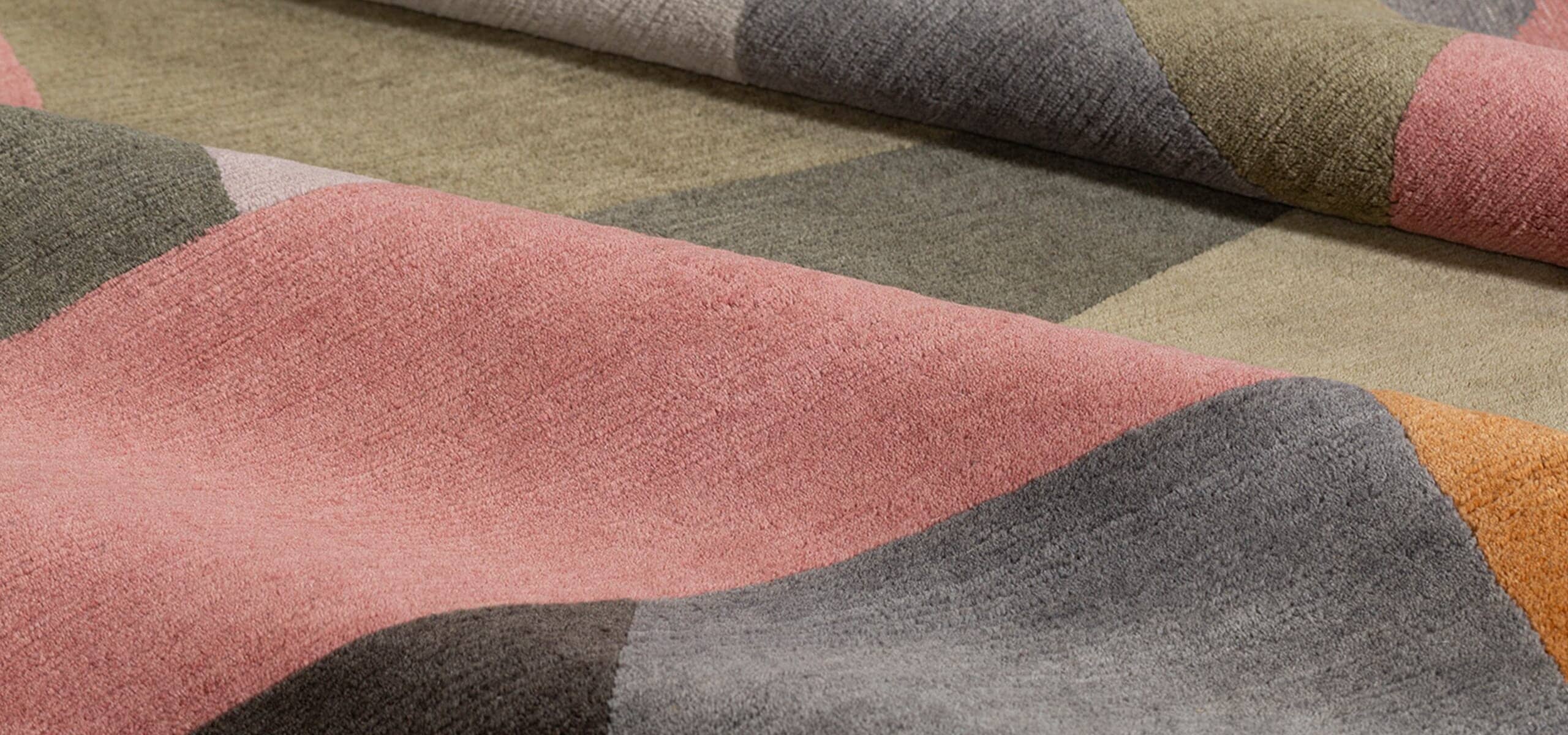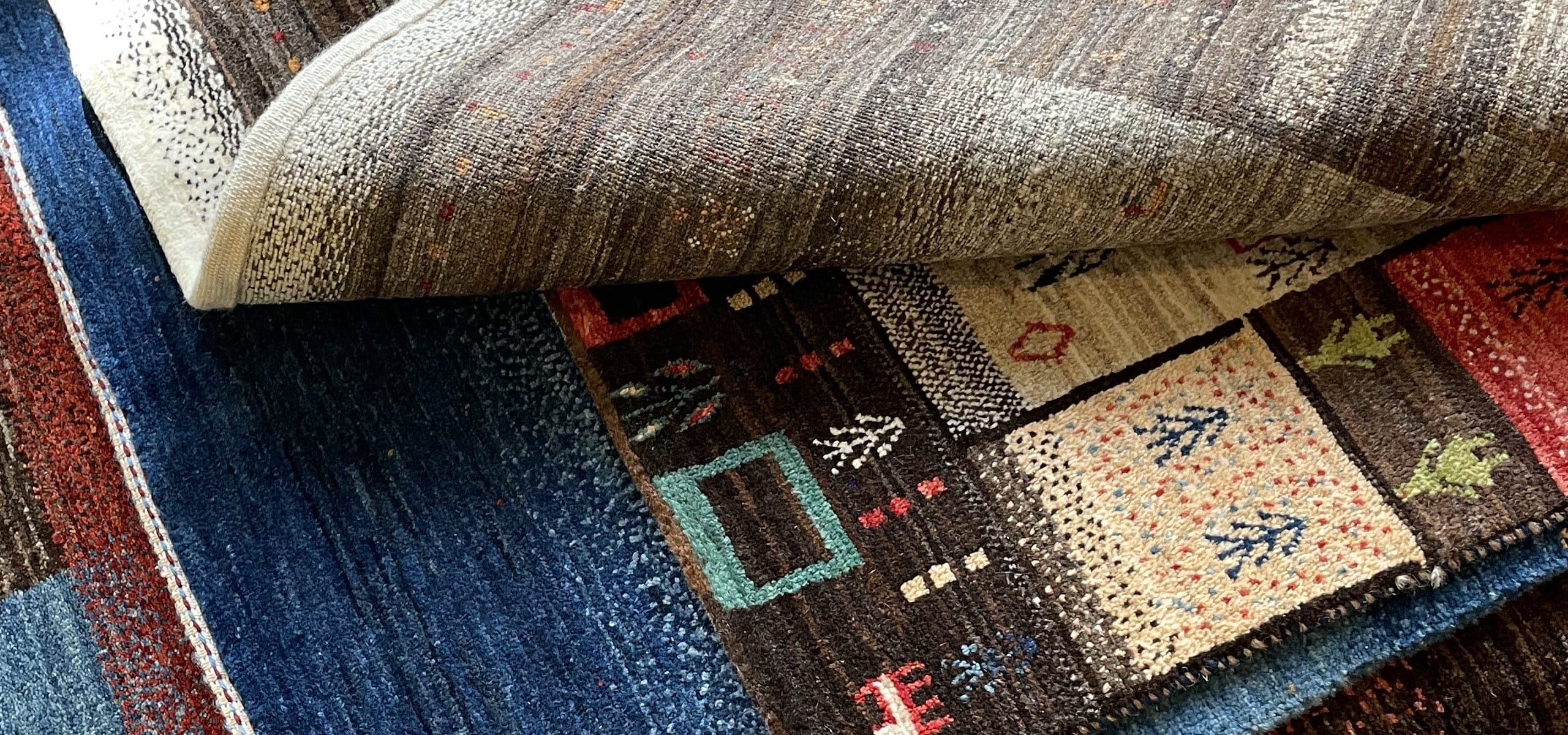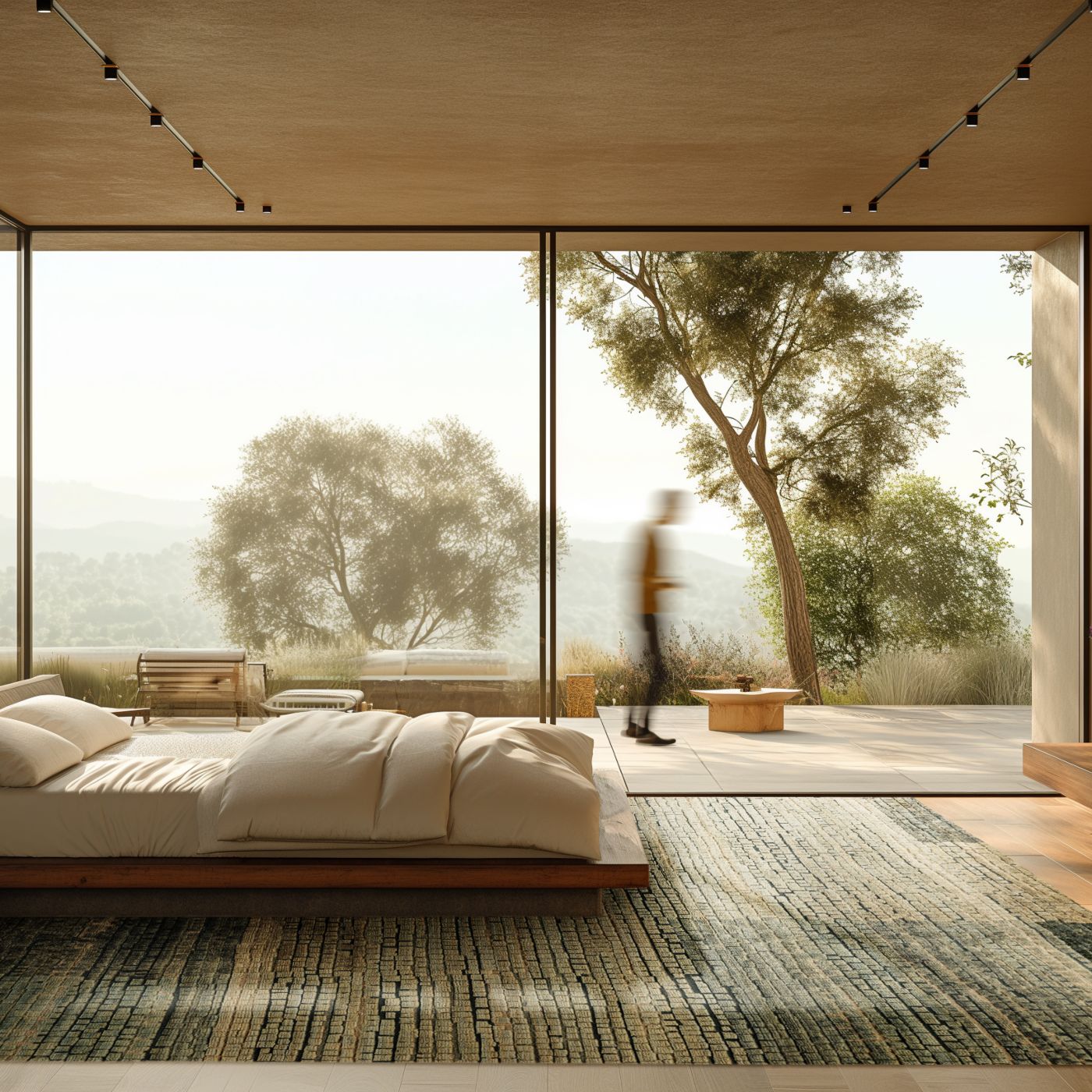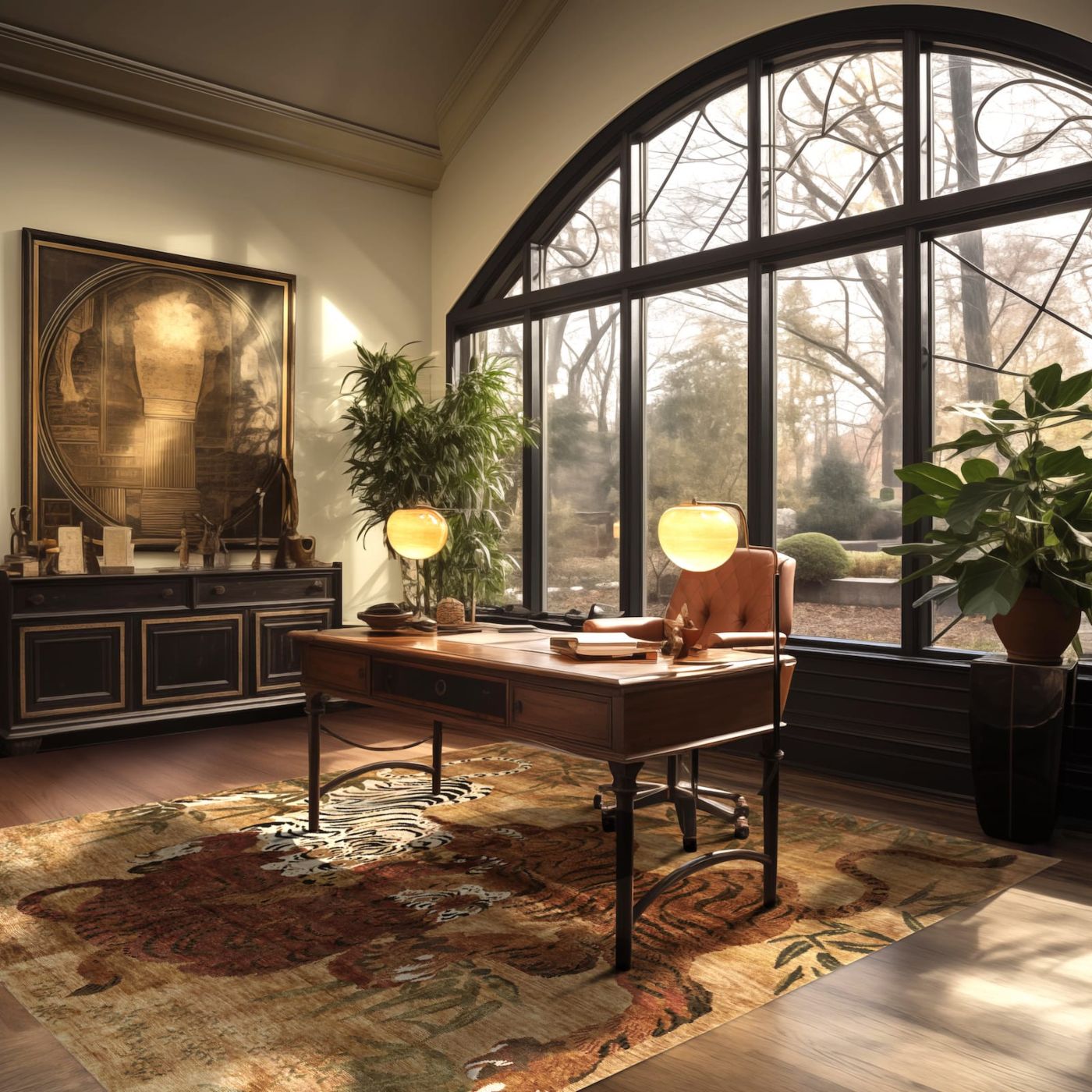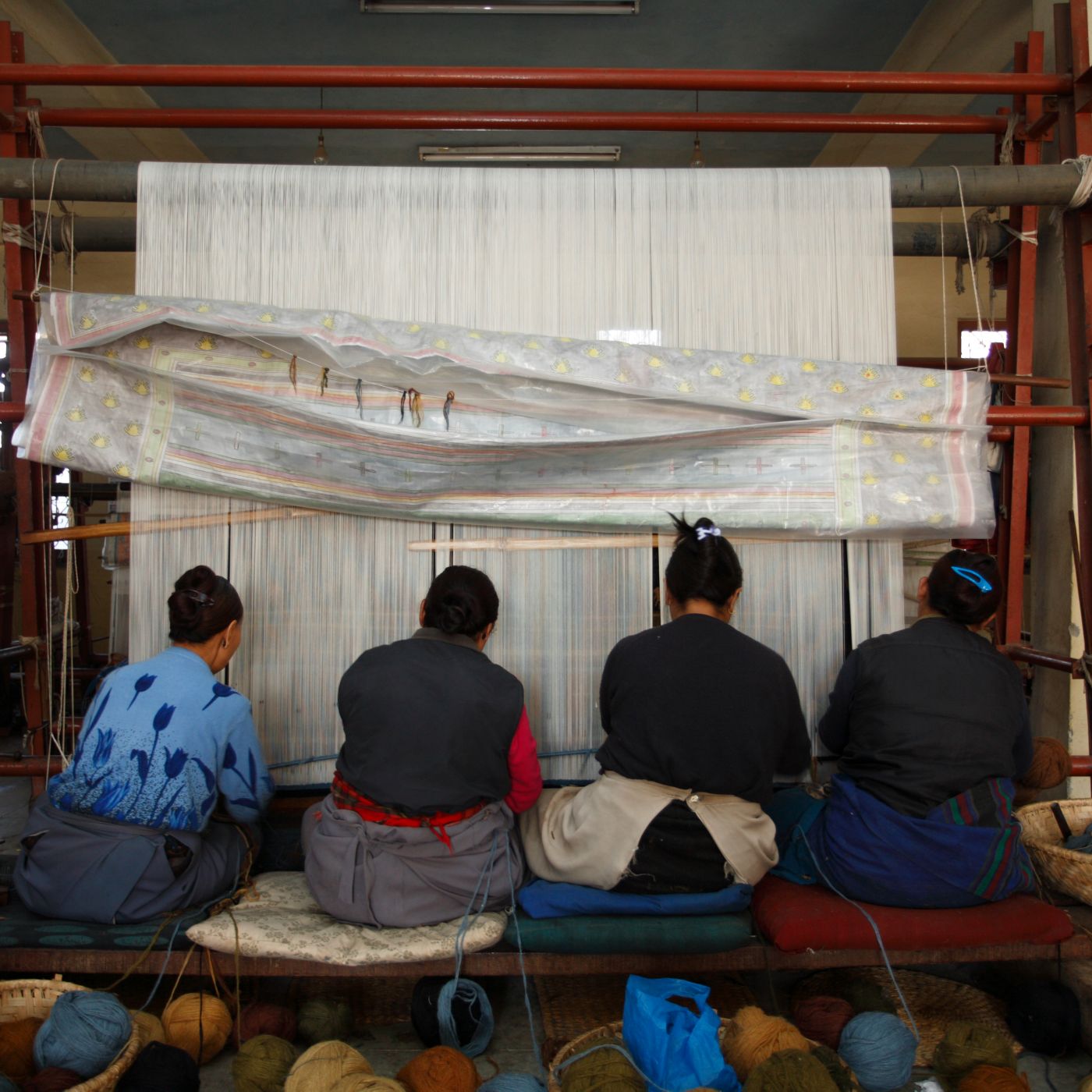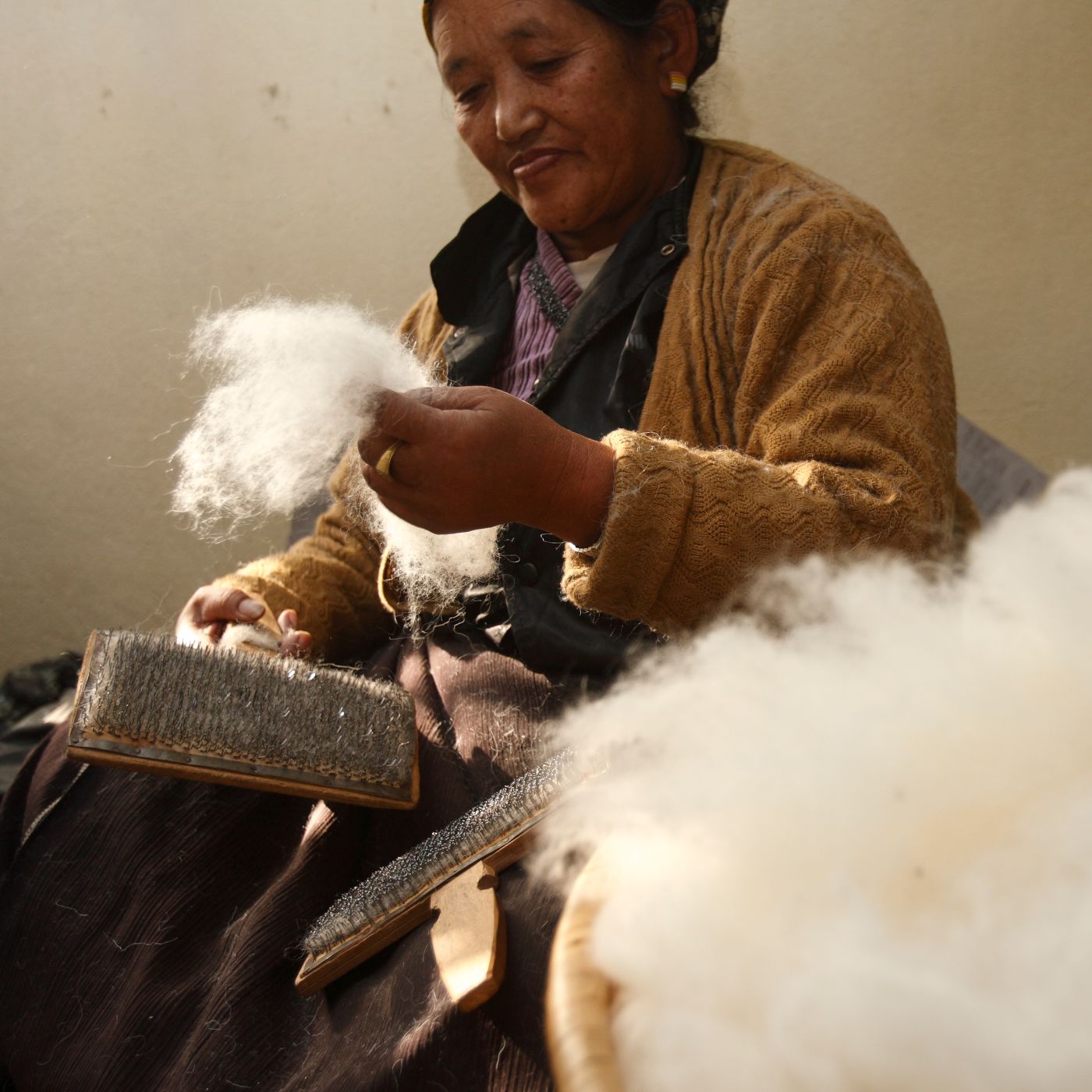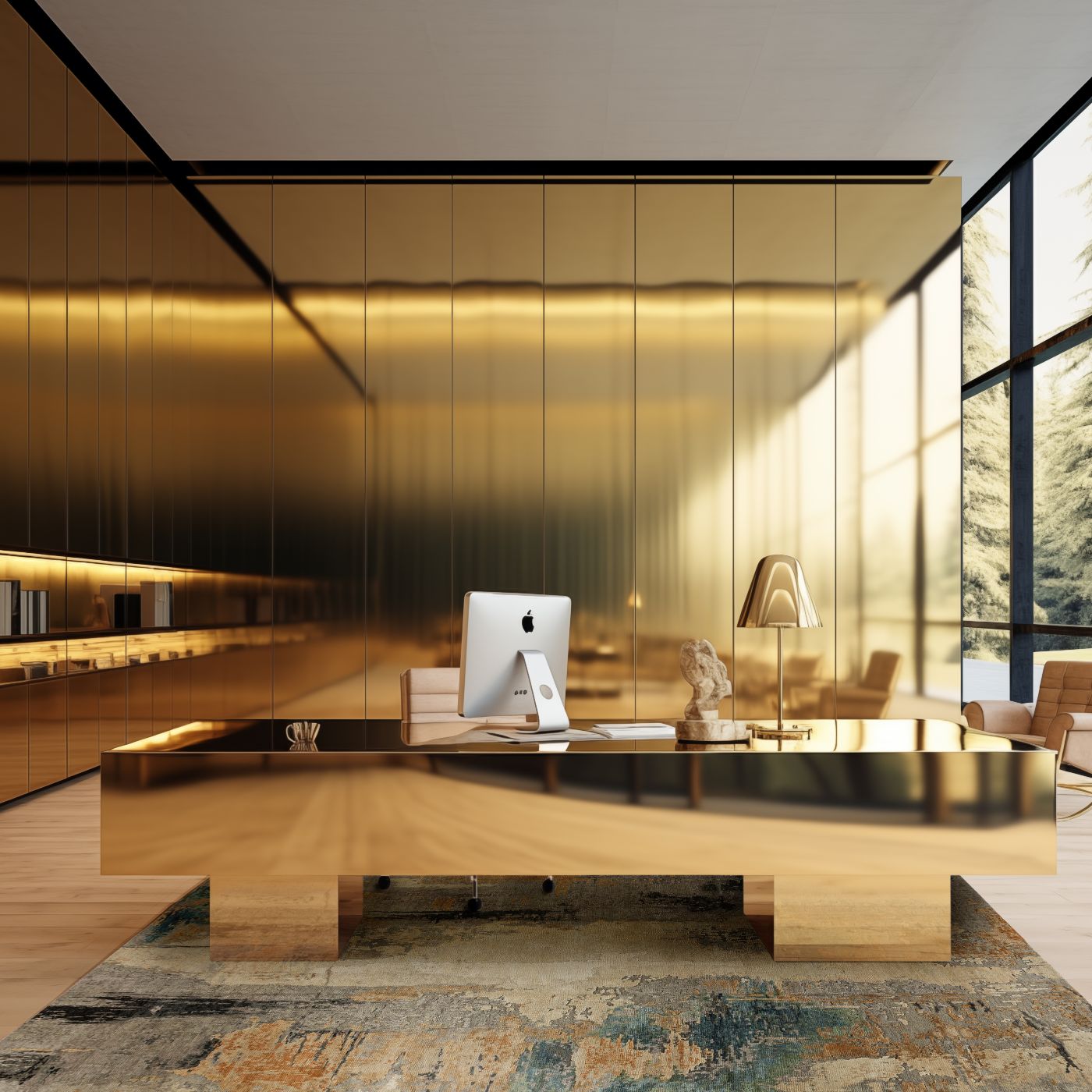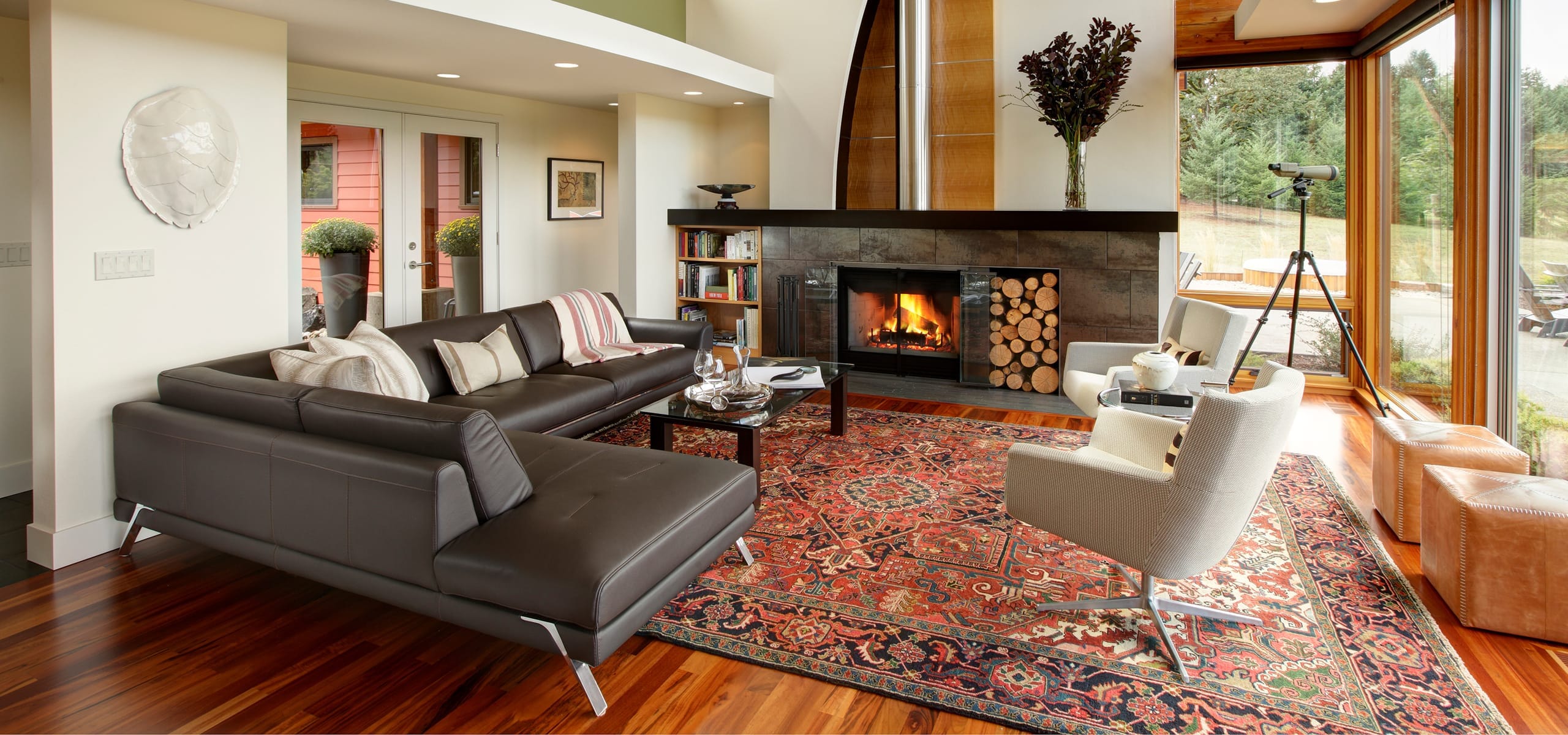
Heriz Rugs: Your Guide to These Durable, Hand-Woven Persian Carpets
Persian rugs look as polished in an apartment living room with antique furniture as they do in a five-star hotel lounge. There’s perhaps no greater evidence of their longevity than the ubiquity of one of their most popular iterations: the Heriz rug.
Heriz rugs (pronounced “ha-rees”) have the power to complete or transform a space entirely thanks to their bold, captivating designs. They complement a multitude of decor styles, and they’re well known for their strength and durability.
What makes Heriz rugs so magnificent? Here’s everything you didn’t know you needed to know about these handmade, one-of-a-kind carpets.
The History and Symbolism Behind Heriz Rugs

Heriz rugs—also known as “village rugs”—are perhaps the most famous style of traditional Persian rugs.
These artisan tapestries originated in farming villages in northwest Iran, known for their centuries-old weaving techniques. The region’s traditional methods have essentially gone unchanged and are handed down from old eras to new, a testament to the effective, revered process.
Like most Persian motifs, Heriz rugs traditionally feature geometric, nature-inspired designs with stylized lines and shapes that are thought to bring luck, protection, and love to their owner. Heriz rug artisans often weave stories from the past into their designs, much of the time from memory.
Weavers tell these stories through traditional tribal shapes and patterns and tales of old times passed down through generations, including significant moments in the arts, their culture, and the rich history of Persia.
“When I worked in the warehouse of a major rug importer in the late 70’s, I found some large, coarsely woven rugs that had been rolled up in the back of the warehouse—untouched. After I was given permission to open them, I laid them out one on top of the other, marveling at them from end to end. These were the Heriz. Their bold geometric patterns formed with beautiful rusts, reds, ochres, and blues contrasted with magnificent ivory and beige made my heart beat fast. This experience began my love affair with Heriz rugs, which still runs strong to this day.”
—James Tufenkian
The Heriz Rug-Making Process
The Heriz rug-making process represents the culture and history of their Iranian origins from design conception to its final touches. A single rug can take 1500+ hours of artisanal handiwork!
1. Pattern and Design

Heriz-style rugs are instantly recognizable for their large center medallion and distinct corner pieces. Persian nomadic tribes pass down designs that feature striking geometric shapes with symmetrical, leaflike, or angular motifs.
2. Materials

The materials used for making Heriz rugs also account for their desirability. Traditional Heriz Persian rugs come from near Mount Sabalan, a mountain rich in copper deposits. As the local sheep graze, they drink from the mountain’s copper-infused water, which is thought to strengthen and improve the quality of their wool.
With special vegetable dyes, the wool yarn is hued with the conventional rust reds, navy blues, golds, greens, and amber colors that make Heriz Persian rugs so distinct. Unlike chemical dyes, these colors soften over time, increasing the rug’s beauty and depth. Weavers typically craft the rugs using a resilient all-wool yarn onto a strong cotton foundation.
3. Weaving Technique
Artisans weave the rugs on framed looms and create them with hand-tied, symmetrical knots that differ from other Persian rug styles. With up to 80 knots per square inch, this technique creates a dense, low pile.
4. River Soak
Heriz rugs get their beautiful, distinguishable rust-red hue from a unique soaking method that alters the natural dye and changes its color.
After the rug is complete, rug makers place them in the region’s copper-laced water, which helps to produce the unique, vibrant rust-red color exclusive to authentic Heriz rugs.
How To Style a Heriz Rug

The bold, geometric patterns and vibrant colors of Heriz rugs make them an instant decorative asset in modern and traditional environments. Make the most of any space with these four decor ideas to style a Heriz Persian rug in any room.
1. Select the Correct Size

A too-small rug can seem underwhelming, while a rug too large for a room may look awkward. Find the right size for your Heriz rug with these tips:
- Select a rug size at least six to eight inches wider than prominent furniture in the space, especially if you place couches, chairs, or tables on top of the rug.
- Leave at least a foot of floor space between the edge of the rug and the wall unless any furniture sits directly against the wall.
- Smaller rugs—less than 8’ x 10’ in most instances—can work in larger rooms as long as you layer them with other rugs or mindfully place them as part of a smaller section of the room, like in a nook or separate seating area.
A design professional can guide you through this process if you need additional help. Whether you use the rug as a design starting point or incorporate later in the process, it’s good to begin with a room-sized Heriz—9’ x 12’ or larger—so that all your furniture can sit on the rug to create an island of comfort for you, your family, and your guests.
2. Consider It a Focal Point
How you incorporate a Heriz into a room’s decor depends on whether you are starting from scratch or trying to incorporate existing furnishings into the room. If you are starting from scratch, you can begin with the rug.
Heriz rugs are undoubtedly statement pieces that dramatically—and beautifully—alter the feel of a room. Consider the elements in its design, from bold hues to ornate motifs, and find pieces for the rest of the room’s decor that complement the space’s energy.
When you add new upholstered pieces they should be in neutral colors so they don’t compete with the rich colors and patterning of the Heriz.
If you have a roomful of furniture already, once you have placed the Heriz in the room, take photos of the space from several angles. It should be obvious to you if one of your upholstered pieces doesn’t work with the rug, in which case you may need to reupholster it (in neutral colors), move it to another room, or replace it.
Warm wood furniture, geometric lamps, rust-colored fabrics, and vintage-style frames are all ways to bring the room together, forming a visual theme with your Heriz rug at the center.
3. Play with Patterns and Colors
Pattern and color mixing is a unique way to infuse personality into any space. Taking cues from Heriz’s distinct patterns and palettes is the perfect place to begin. Heriz rugs provide a multitude of ideas for color schemes because they have so many colors in them—rusts, ochres, blues, ivory, and beige to name a few.
If you stick with the colors that are in the rug, you can easily create cohesion. Here are a few suggestions:
|
STYLE |
WALLS |
SOFA |
CHAIRS |
PILLOWS |
|
Traditional |
Ivory |
Beige |
Navy |
Red, Navy |
|
Transitional |
Taupe |
Ivory |
Light Blue |
Light Blue |
|
Contemporary |
Beige |
Black Leather |
Taupe |
Black/white |
|
Modern |
Ivory |
Red |
Blue/Red Stripe |
Ivory |
|
Vintage |
Beige |
Camel Leather |
Light Blue |
Red |
|
Eclectic |
Med. Blue |
Camel |
Stripes |
Red |
The key to successfully mixing patterns and prints is to stick with a singular color palette. When that color combination matches those that exist in the rug, you typically can’t go wrong.
The walls in the room can even be a dark color if you’re going for drama, so long as it is a color from the rug. Try to stay away from colors that won’t work well with the rich colors of the Heriz, such as lavender, pink, yellow, and acid greens.
Keep an eye on pattern scale, as well. Other designs you mix and match from there include stripes, florals, and other coordinating geometric prints. Be cautious, however—too many patterns or textures in one space can look busy and bury the beauty of your Heriz-style rug.
4. Layer with the Heriz Rug
Layering rugs is a decor trend that’s here to stay, but mixing more than one bold or patterned rug can be tricky. Fortunately, larger base rugs give even smaller Heriz rugs a chance to shine when placed atop a more neutral floor covering.
Here are some tips to remember:
- Layer a room-sized Heriz over low-pile broadloom carpeting (¼” to ½”), either cut pile, looped pile, or cut-loop pile. This works well if the wall-to-wall carpeting is a neutral color
- Layer a smaller rug over a room-sized sisal rug, especially if you have hardwood floors. This textural variety makes everything work.
- Layer multiple Heriz rugs for a boho effect, keeping similar color palettes and using strategic placement of furniture. This requires an artist’s eye, and choices are especially important when it comes to furniture and in places where rug intersections occur.
Ultimately, the way you layer your Heriz rug should anchor the space to the rug. This way, you can incorporate the warmth and whimsy of Heriz carpets in even the most spacious rooms.
How to Judge the Quality of Heriz Persian Rugs

Exceptional carpet production becomes apparent when you know what to look for. A high-quality Heriz is the product of skilled craftsmanship, premier materials, and techniques that help the rug last a lifetime.
Here’s how you can tell for yourself if a Heriz-style rug is worth its weight in wool.
Research Its Production
With a time-consuming and skilled production process, only hand-knotted carpets carry on the authentic historical traditions of Heriz Persian rugs. Industrially made rugs are rarely as durable or dense and lack the magnificence and character of traditional handmade versions. There is no replacement for good carpet artisanship.
Check the Wool
Luxury, high-quality wool comes from healthy, well-kept sheep, so it’s wise to investigate the source. The wool should possess a significant luster, enhancing the quality of its colors and ensuring resiliency. When you can get your hands on a Heriz-style rug, closely examine the fibers. They should feel pliable without feeling too soft or plush. Pay special attention to whether the fibers appear dry or brittle; those rugs may wear out quicker than higher-quality wool.
Examine the Pile
Heriz rugs are known for their dense piles. The denser the pile, the more tightly woven and durable the carpet. Note that density is not the same as thickness, as highly skilled weavers can craft durable, long-lasting rugs that are highly dense yet feel thinner and lie flatter.
Inspect Its Design
In terms of pattern and symmetry, it’s less about perfection than it is about traditional details. Many commercial carpets are mere adaptations of standardized themes and color combinations. Hand-knotted Heriz rugs possess charming irregularities that reflect the true artisanal workmanship of the carpet.
However, certain color imperfections signal a lack of quality. Closely inspect the fibers to look for colors bleeding into one another. Then, perform a quick dye test with a damp white washcloth to check for colorfastness.
FAQs: Heriz Persian Rugs

What Is a Heriz-Style Rug?
Traditional Heriz rugs are distinct Persian rugs produced in northwest areas of Iran that feature a central geometric medallion surrounded by nature-inspired design motifs. Heriz Persian rugs are known for their durability, handcrafted from 100% wool with dense, hand-tied knots that create a low, sturdy pile.
These rugs are best known for the vibrant rust-red color created by processing the completed rug in copper-laced waters near Mount Sabalan, a region in Iran with high copper deposits. Regional sheep drink the copper-infused waters, producing high-quality wool for local carpet makers who weave the fibers with a strong cotton warp.
Traditional Heriz rugs are handcrafted overseas. Tufenkian’s collection of antique and semi-antique are the same: coarsely woven rugs with colors mellowed and harmonious. Tufenkian reproductions utilize the same symmetrical knot style, traditional designs, and uniquely bold colors that set Heriz rugs apart as inherently beautiful, timeless investments.
How Do I Know if a Rug Is Heriz?
To determine whether a rug is Heriz style, examine its design, materials, production, and color palette. The most easily identifiable characteristic is the large centered emblem and the geometric, tribal elements. But you can also identify Heriz rugs by the rich red tones and ornate styles woven into the design.
A genuine Heriz rug comprises 100% wool rather than wool blends or other synthetic materials.
Genuine rugs are densely knotted and feature unique irregularities on the backside due to the artisanal handicraft of its process. On the other hand, the knots will be uniform if you look at the back of a machine-made rug.
Thanks to their meticulous construction, Heriz rugs are also relatively coarse and extremely sturdy, making them popular in high-traffic areas.
Just before the embargo, Tufenkian acquired a major purchase overseas of beautiful Heriz, all semi-antique dating from the early to mid 20th century. These are primarily large rugs—starting at 9x12 with many 10x14s and some larger ones. Smaller sizes are scarce and often of inferior quality. However, to accommodate the demand for smaller sizes, we can supply classic reproductions produced by Tufenkian.
Where Are Heriz Rugs Made?
Traditional Heriz rugs come from Heris, a northwest province of Iran. Local villagers weave the rugs near copper-rich Mount Sabalan.
This carpet-making tradition began during the 19th century for sale and trade. Still, they were also woven for village locals and considered family staples that would last several generations.
Are Heriz Rugs Expensive?
High-quality rugs can be more affordable than you might think. The cost of any rug, regardless of style, depends on the size, materials, construction method, and country of origin. These factors affect the overall price point and determine a rug’s value.
Rugs are an essential foundation for a room, and, like any solid foundation, you get what you put into it. High-quality rugs are pricier than their mass-produced counterparts for a good reason. Because they’re “extremely handmade,” Heriz Persian rugs have more care put into them than a machine-made version.
Still, the total cost varies. Our selection of Heriz rugs includes antiques, semi-antiques, and hand-woven contemporary rugs inspired by the Heriz style that range from hundreds to thousands of dollars.
What Is the Difference Between Heriz and Serapi?
Both Serapi and Heriz rugs are similar in that they both feature geometric patterns, a central medallion, and reddish hues. Serapi rugs are cousins to the Heriz, crafted of a different quality before the 20th century. They also differ in the weave and their design details.
Heriz rugs tend to have darker, more vibrant colors with greater detail. A Serapi rug, on the other hand, may have more open space in its design, with muted tones and amber colors.
As previously mentioned, Serapi rugs are always antiques, while weavers still produce Heriz carpets today. The former earned its designation thanks to a higher quality, finer weave. Serapi rugs can be more expensive than Heriz rugs due to their rarity. Modern reproductions attempt to mimic the terra-cotta colors and rounded designs portrayed in Serapi rugs at a lower price point.
Accessible Artisan Heriz Rugs for People to Love
Given the rich history and numerous benefits of Heriz rugs, it’s easy to see why these carpets are well-loved worldwide. No matter your interior design style, a Tufenkian Heriz-style rug infuses both form and function into your space.

Heriz Persian rugs are one-of-a-kind investments honoring longstanding tradition and timeless style. Even better, you can pass down a well-maintained Heriz carpet to enjoy for generations. You don’t buy these for the knots per inch. You buy them for their beauty, power, and presence. They truly don’t make them like this anymore.
Ready to add a Heriz rug to your home? Shop Tufenkian’s collection, and let our team of rug experts help you find the right option for your space.
Test drive a Heriz rug or visit a showroom near you today.


